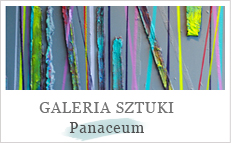During the treatment under anaesthesia, the patients are looked after by an experienced physician − the second degree anaesthesiologist and the intensive care specialist.
Panaceum is a centre where patients are treated comprehensively. We start with a thorough diagnostics and offer prevention. Not only do we begin with accurate diagnostics and prophylaxis offer, but also perform a complicated bone reconstruction, periodontal surgical treatment and remove impacted teeth.
At the Panaceum Centre of Implantology and Cosmetic Dentistry we perform:
Root resection
The removal of a root apex along with the lesion and a retrograde filling of the tooth root canal
Reconstruction of the jaw and mandible bones
Bone loss is a natural result of teeth removal. Jawbone deteriorates much more quickly, due to their spongy, delicate structure, while the mandible bone deteriorates more slowly. However this strong, cortical bone diminishes in all directions after teeth removal. Implants that imitate natural teeth must be placed in hard tissues, i.e. bones. Only then they can assume responsibility for biting hard food. Before undertaking implantation, it is often necessary to reconstruct the lost bones. In the side sections of the jaw, this procedure is called maxillary sinuses bottom lift. Bone blocks are most often used in the jaw − i.e. autogenous grafts (bone tissue transplants).
Maxillary sinuses bottom lift
Maxillary sinuses are the bubbles filled with air, located inside the even jawbones. Imagine your hands are folded as if they were holding apples. This is the exact shape that the jawbones have. Only in the facial skeleton, instead of apples, there is the space filled with air, the balloons that inflate and expand when the molars are removed. Sometimes after losing teeth in the lateral sections, the maxillary sinuses become twice or even three times bigger. A loosely knit, spongy bone (this structure can be accounted for its location, on the one hand the jaw has to keep the teeth, on the other − to prevent brain injuries while biting hard food) also deteriorates in the alveolar ridge.
As a consequence, only few millimetres of the bone are left. And that is not enough to keep implants. The maxillary sinuses bottom lift is performed in a very delicate way so as not to damage its thin wall made of connective tissue. Then we use the bone replacement material of the Swiss company Geistlic and wait for six months until the new bone adapts, becomes stronger. Then the implants or titanium screws can be inserted, as well as the crowns imitating real teeth.
The eighth teeth removal
Teeth of wisdom do not sometimes fit on the dental arches and cause crowding of teeth, worsen the occlusion, make speech and eating difficult. > At Panaceum, after analysing the stomatognathic system, evaluation of X-ray or computer tomography pictures, we remove the eighth teeth under local anaesthesia or under narcosis.
Gingival grafts
Covering the recession. Periodontal diseases often lead to a gum loss. So-called recession appears. The treatment of gingival recession has an aesthetic and healthy value. The deficiency in soft tissues is filled with the grafts of the palate connective tissue. A single cut is made from the direction of the premolars towards the first molars. We transfer the collected connective tissue to the place of the recession, and sew a small wound on the palate with thin hairlike threads.
Guided tissue regeneration
With the loss of bone support, teeth become loose and can fall out. Nowadays bones can be rebuilt due to an operating technique which complies with the idea of guided tissue regeneration. A dentist puts layers of materials that reconstruct the hard tissues and then places a membrane that protects the new bone against the death of the gingival tissue cells. This membrane disappears after half a year, leaving strong, healthy bones.
Panaceum personnel is prepared to perform a wide range of surgical treatment, starting from those saving individual teeth (like resection), ending with complicated operations of maxillary sinuses lift or bone grafts.
We have a fully equipped operating theatre. We perform every treatment under anaesthesia, using a microprocessor for local anaesthesia, while extensive procedures are carried out under general anaesthesia.
The success of surgical treatment depends on many factors − comprehensive diagnostics, treatment plan, the use of a range of proven but individualized procedures performed under sterile conditions, and a skilled doctor’s hand.
However, one has to keep in mind that human beings, who come to us with their doubts, fears and anxieties, are the most important part at the beginning and the end of this chain. The task of the staff is not only to perform a perfect operation, but also to provide psychological support − the peculiar treatment of the soul.





